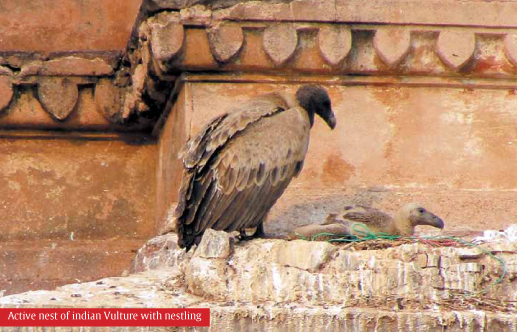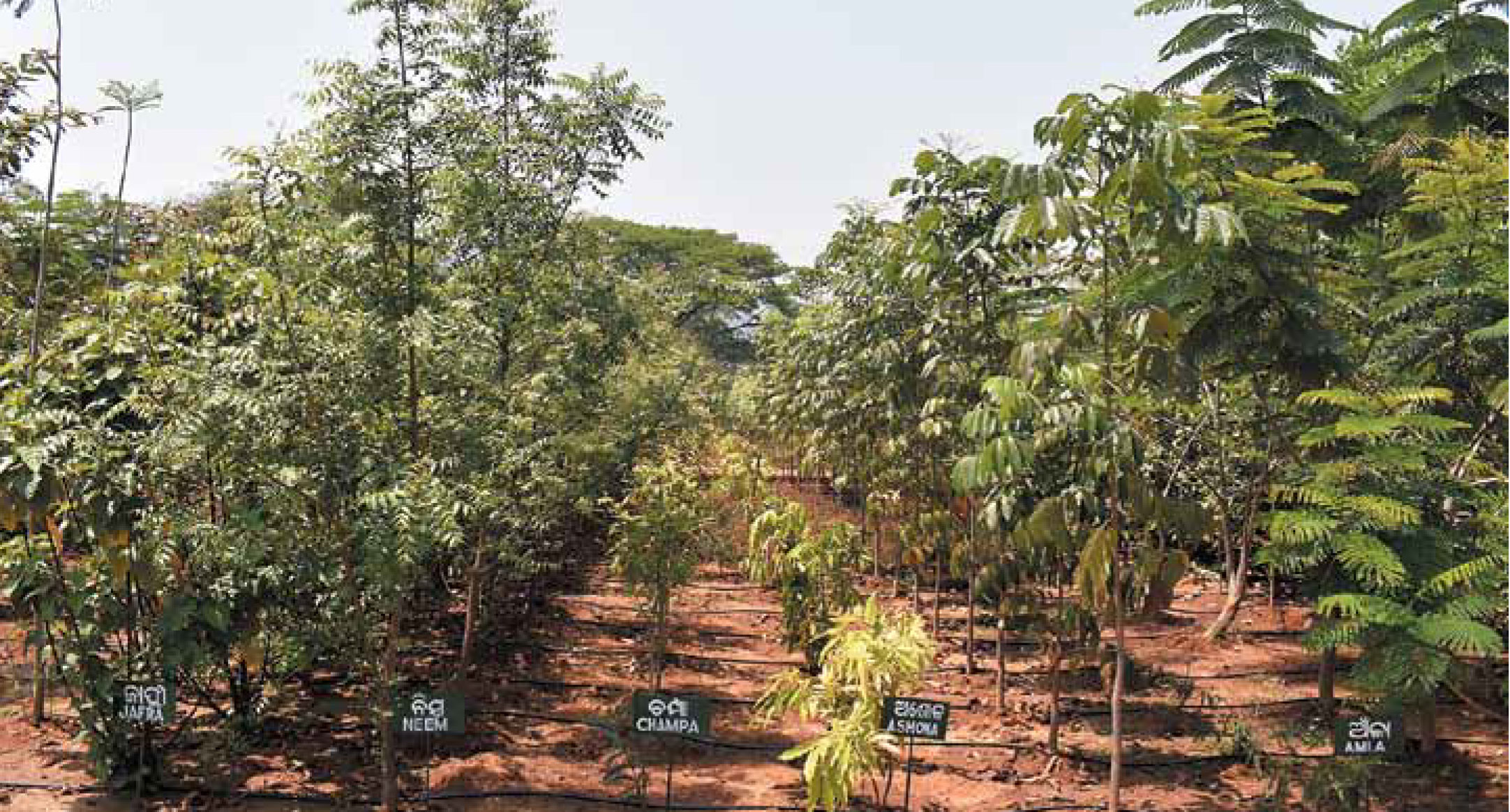
A single Peepal tree acting as a building foundation stone for constructing multiple houses to Honeybees
By Rathod Digvijaysinh Umedsinh, Dr. Nanita Berry, Neeraj Prajapati, Dr. Darshan K, Kaushal Tripathi
“Bees are good for trees and trees are good for bees”. Together, bees and trees belong in the forests. Both were important creatures of nature and indicators of the health of natural ecosystems. Wild honeybees always prefer larger and taller trees as nesting sites rather than open landscapes. Honeybees most often prefer to build their combs or nests on higher trees rather than close to the ground, but bees nests can be found everywhere in a tree. High nesting place on trees or mountain rocks is an advantage for honey bees where the area is often affected by ground forest fires and bushfires during the dry season. When enough colonies of honeybees are present in forests, it is positively correlated with improving the genetic diversity and forest health by pollination which leads to an increase in seed production followed by regeneration of associated herbs, shrubs, and trees.
Forest-dependent beekeeping should be encouraged to insist the local beekeepers how would be interested in the protection and conservation of these forests and,in particular, of the tree flora preferred by honeybees.
So many authors and researchers quoted these statements: “Without bees, there would be no flowering plants, and without flowering plants, there would be no bees.” It indicated a strong relationship between bees and flowering plants. The importance of bees in nature, such as bees as part of ecosystems, pollination work, improvement of biodiversity, production of forest livelihoods, etc., is significantly greater.
In India, five important honeybees are Apies dorsata (The rock bee), Apis cerena indica (The Indian hive bee), Apies florae (The little bee), Apies mellifera (The European or Italian bees), Melipona irridipennis (Dammer bee or stingless bee).
Among the five bee species, Apis mellifera is the most common bee species in India and the world used for honey production. In India the number of people engaged in the beekeeping profession is meager as per Table 1.

The Government of India has approved a new central sector scheme entitled “National Beekeeping & Honey Mission (NBHM)” for 2 years for the overall promotion and development of scientific beekeeping in mission mode to achieve the goal of the “Sweet Revolution” in the country. In India, honeybee cultivation has been used for enhancement of agricultural and horticultural crop yields by using Italian bees but enhancement of forest yields, biodiversity, and improvement of ecosystem health status, promotion of native honey bee conservation and cultivation is important.
Apies dorsata has been found throughout India in sub-mountainous regions up to an altitude of 2700 m. They build a single comb in an open space of about 6 feet long and 3 feet deep. They often shift the place of the colony. Rock bees are ferocious and difficult to rear. Apis florea builds single vertical combs. They also construct comb in open of the size of palm in branches of bushes, hedges, buildings, caves, empty cases etc. They produce about half a kilo of honey per year per hive. They are not rear as they frequently change their place. They are distributed only in plains and not in hills above 450 MSL. Apis cerana indica is a domesticated species, which constructs multiple parallel combs with an average honey yield of 6-8 kg per colony per year. They are more likely to swarm and abscond. Besides true honey bees, two species of stingless or dammer bees, viz. Melipona and Trigona are in abundance in our country. Stingless bees have an important role in the pollination of various food crops.
The domestication and cultivation of Indian honey bees are very difficult, but instead of that identifying a suitable site in natural forest ecosystems to overcome this problem with in-situ site management practices such as enrichment of tree plantations, enhancing bee flora, identifying local communities and enhancing their skills with scientific inputs. In sites meeting the demand for honey bee requirements such as preferable bee flora including for nectar and pollen collection, water requirements, and protected shelter. In natural landscape water requirement meet by rivers, dam area, water reservoirs, flooded agricultural and fisheries farm etc., Shelter requirement meet by natural rocky mountain and big-taller trees. Researchers are helping to identify the suitable site and tree species preferred by local honeybee species.


The Bargi Dam is situated on the Narmada River in Jabalpur (M.P.). Construction of this dam began in 1974 and was completed in 1990. It is one of the important dam out of 30 dams on the river Narmada. Bargi Dam serves as a regional irrigation system and has become a tourist attraction due to the development of ecotourism activities such as boating and unique natural landscape views with teak dominating the forest area. The Bargi Dam site area is one of the rich biodiversity areas. It is a good site for helping in the study of the relationship between surrounding forest areas and honey bees. It is copious in Apies dorsata honey colonies. One tree of Ficus religiosa on the Bargi Dam site area on the roadside has founded 25 colonies and 5 absconded honeycombs on the single tree. Ficus religiosa branch architecture is suitable for honeybee’s house construction due to its long and thick secondary branches. Apies dorsata bees have preferred society formation. Increasing colonies of these bees for forest health improvement, it is urgent need to study which tree are species preferred based on branch formation, the height of a tree, nectar content in flowers and flowering duration, microclimate under the tree canopies. Also on the same track 2-3 new beehives formed on Kapok trees
A fascinating feature of Lantana camara is that it has a multicolored inflorescence, which can display yellow, red, purple, pink, and even white flowers that attract bees. The scientific community already reported the study on the relationship between nectar robbing and pollination between Lantana camara and honeybees. This site study will help in finding significant interactions between water bodies and wild honey bees. How can we use dam site water bodies for sustainable environmental development of surrounding ecological area. It will be helping in understanding the role of bees in enhancing the forest cover of the country. These sites provided primary data on the bee population of the region.




